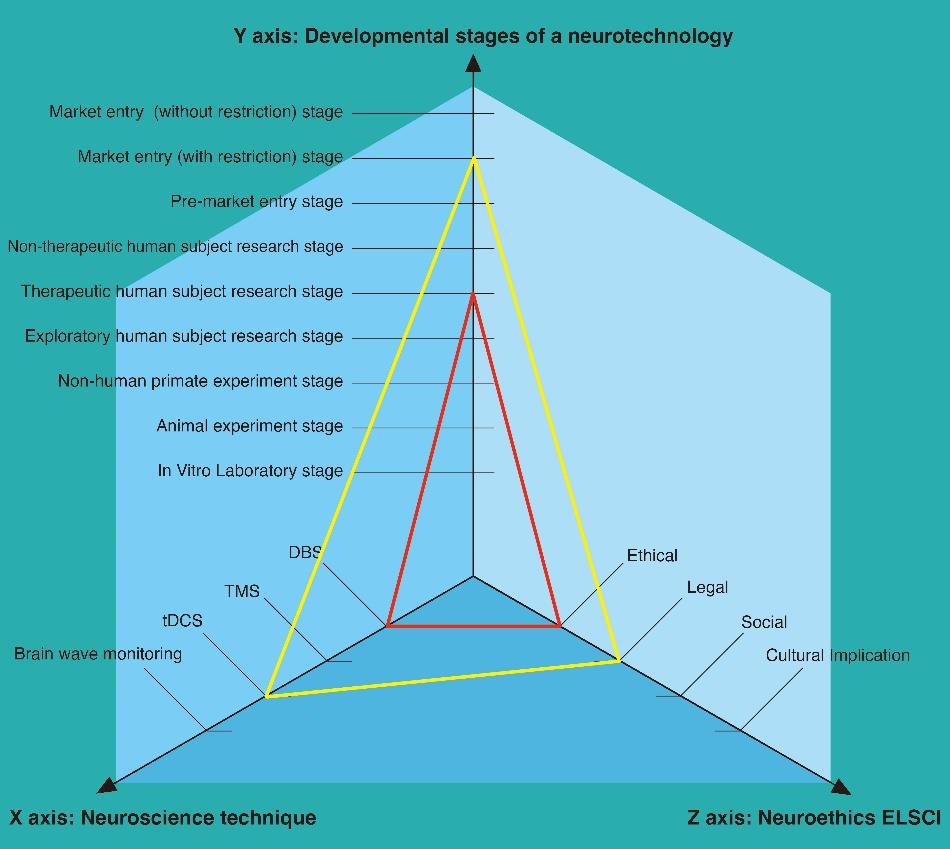Articles
Article Tools
Stats or Metrics
Article
Review Article
Exp Neurobiol 2023; 32(1): 8-19
Published online February 28, 2023
https://doi.org/10.5607/en22032
© The Korean Society for Brain and Neural Sciences
An XYZ-axis Matrix Approach for the Integration of Neuroscience and Neuroethics
Anita S. Jwa1, Jiwon Shim2, Sinu Choi3, Juhee Eom4, Soojin Kim5 and Young-Joon Ryu6*
1Department of Psychology, Stanford University, Stanford, CA 94305, USA, 2Department of Philosophy, Dongguk University, Seoul 04620, 3Institute of Liberal Art, Pukyoung National University, Busan 48513, 4Department of Law, Konkuk University, Chungju 27478, 5Division of Communication & Media, Ewha Womans University, Seoul 03760, 6Department of Medical Ethics and Medical Humanities, Kangwon National University, Chuncheon 24341, Korea
Correspondence to: *To whom correspondence should be addressed.
TEL: 82-32-250-8840, FAX: 82-32-259-5637
e-mail: mindmader@gmail.com
This is an Open Access article distributed under the terms of the Creative Commons Attribution Non-Commercial License (http://creativecommons.org/licenses/by-nc/4.0) which permits unrestricted non-commercial use, distribution, and reproduction in any medium, provided the original work is properly cited.
Abstract
The recent, unprecedented advancement in neuroscience has led to new discoveries about the human brain and its function. Yet at the same time, it has spurred novel ethical and regulatory issues, and the field of neuroethics has emerged as an interdisciplinary endeavor to address these issues. Across the globe, extensive efforts have been underway to achieve the integration of neuroscience and Neuroethics, with active engagement not only from academia but also from the government, the public, and industry. However, in some countries, integrating neuroscience and neuroethics has proved to be a particularly challenging task. For example, in South Korea, the government has primarily driven the integration effort, and only a small group of researchers is properly trained for conducting an interdisciplinary evaluation of ethical, legal, social, and cultural implications (ELSCI) of neurotechnology. On the basis of the last few years of experience pursuing a government-funded neuroethics project in South Korea, we developed a new operational framework to provide practical guidance on ELSCI research. This framework consists of the X, Y, and Z axes; the X-axis represents a target neurotechnology, the Y-axis represents different developmental stages of the technology, and the Z-axis represents ELSCI issues that may arise from the development and use of the neurotechnology. Here we also present a step-by-step workflow to apply this matrix framework, from organizing a panel for a target neurotechnology to facilitating stakeholder discussion through public hearings. This framework will enable meaningful integration of neuroscience and neuroethics to promote responsible innovation in neuroscience and neurotechnology.
Graphical Abstract

Keywords: Neuroscience, Ethics, Three-dimensional, Social integration


